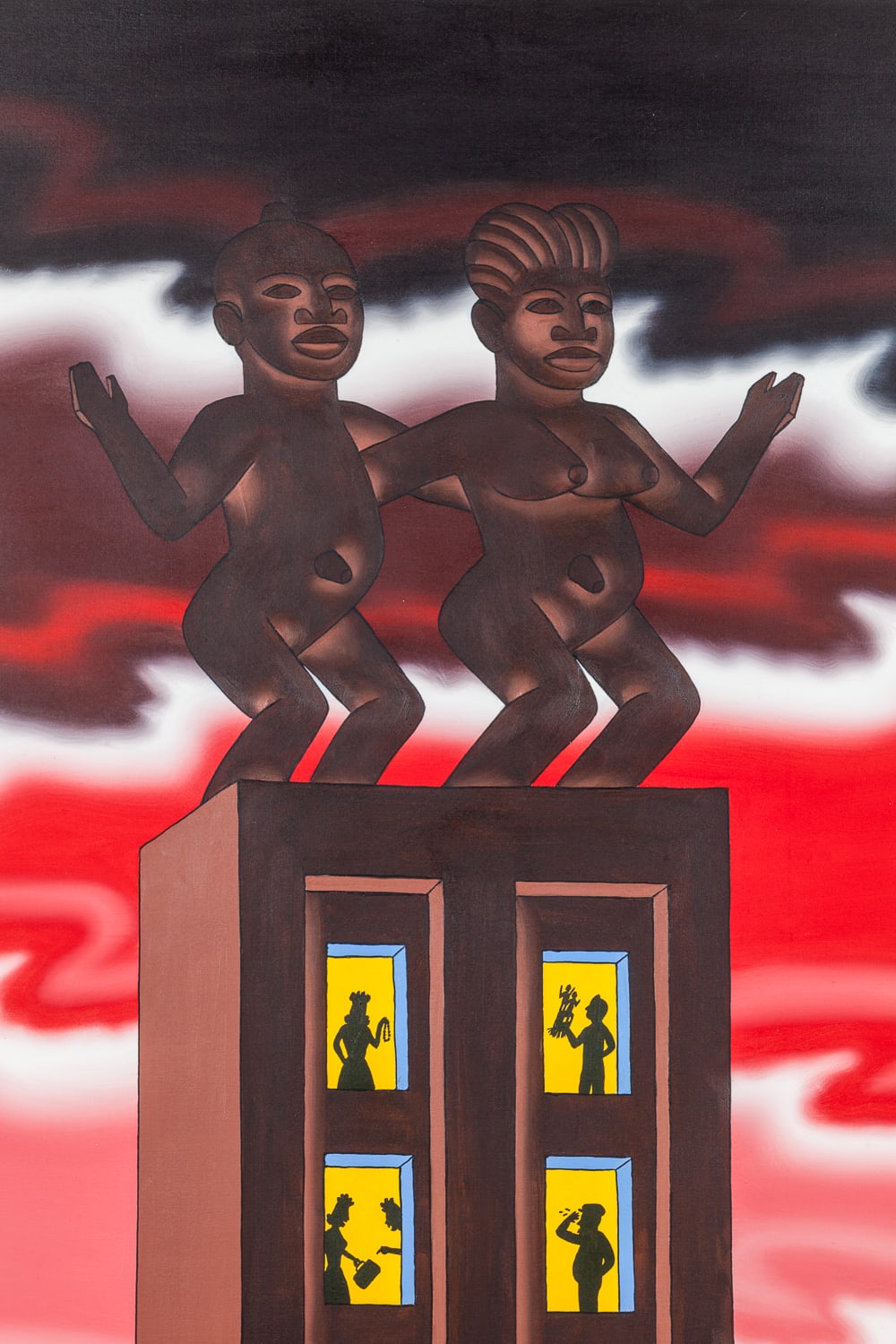Roger Brown
African Hotel, 1989
oil on canvas
72 x 48 in
182.9 x 121.9 cm
182.9 x 121.9 cm
6552
Further images
Artist Roger Brown (b. 1941 - d. 1997) was a great lover of architecture and observer of its trends, trajectories, victories, and follies. His lifelong partner George Veronda (b. 1940 -...
Artist Roger Brown (b. 1941 - d. 1997) was a great lover of architecture and observer of its trends, trajectories, victories, and follies. His lifelong partner George Veronda (b. 1940 - d. 1984) was an architect himself, and Brown's extensive travels exposed him to unique regional architecture around the world. As a painter, Brown found architecture to be a limitless stage for his enigmatic semi-social theater, each building within a cityscape an essential actor within the story of a city, and even each window bearing some potential for a silhouette shadowplay.
African Hotel continues in this tradition, bringing the "building as figure" and "building as stage" concepts to a near-literal extent. The parallel columns of windows have a dramatic rising action as they head up towards sculptural figures upon the rooftop. It's not clear if Brown intended the figures to specifically represent a particular artistic tradition in Africa, but as a dedicated researcher of art history, avid attendee of the Art Institute of Chicago, and great admirer of traditional folk arts, it's likely that Brown drew inspiration from specific sculptures he would have seen at the museum. Baobob trees flanking either side of the highrise likewise underscore Brown's attentive specificity.
African Hotel continues in this tradition, bringing the "building as figure" and "building as stage" concepts to a near-literal extent. The parallel columns of windows have a dramatic rising action as they head up towards sculptural figures upon the rooftop. It's not clear if Brown intended the figures to specifically represent a particular artistic tradition in Africa, but as a dedicated researcher of art history, avid attendee of the Art Institute of Chicago, and great admirer of traditional folk arts, it's likely that Brown drew inspiration from specific sculptures he would have seen at the museum. Baobob trees flanking either side of the highrise likewise underscore Brown's attentive specificity.







